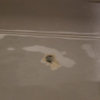drylok etch
WendyB 5A/MA
12 years ago
More Discussions
I mixed up a solution of Drylok Etch for cleaning some efflorescence on basement wall. Now what do I do with the remaining solution? about 1/3 gallon.
The package doesn't say anything about disposal. Just a ton of warnings about inhalation, swallowing, etc. Says it contains "sulfamic acid". nothing good came up googling.
I guess I could clean more walls ... :(



ionized_gw
WendyB 5A/MAOriginal Author
Related Professionals
Auburn Kitchen & Bathroom Remodelers · Crestline Kitchen & Bathroom Remodelers · South Park Township Kitchen & Bathroom Remodelers · Clarksville General Contractors · Jamestown General Contractors · Janesville General Contractors · Kemp Mill General Contractors · Avenal General Contractors · Manchester Painters · Bend Painters · Glen Allen Painters · Golden Painters · Pensacola Painters · Silver Spring Painters · Sunnyvale Paintersbrickeyee
sierraeast
ionized_gw
WendyB 5A/MAOriginal Author